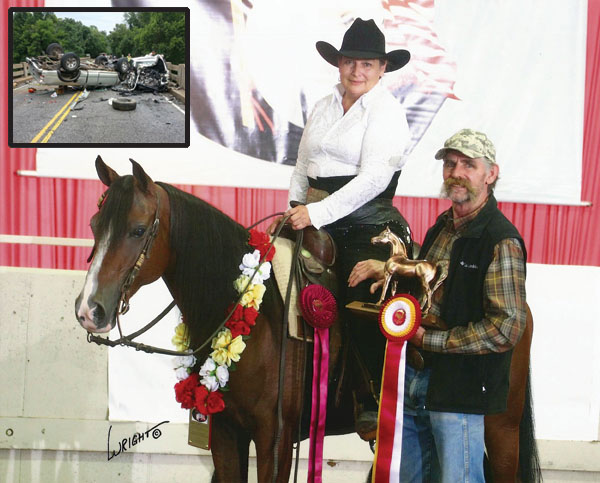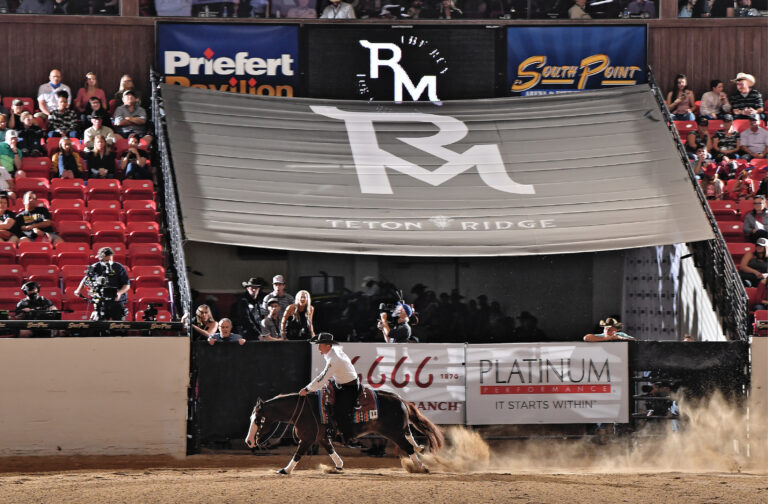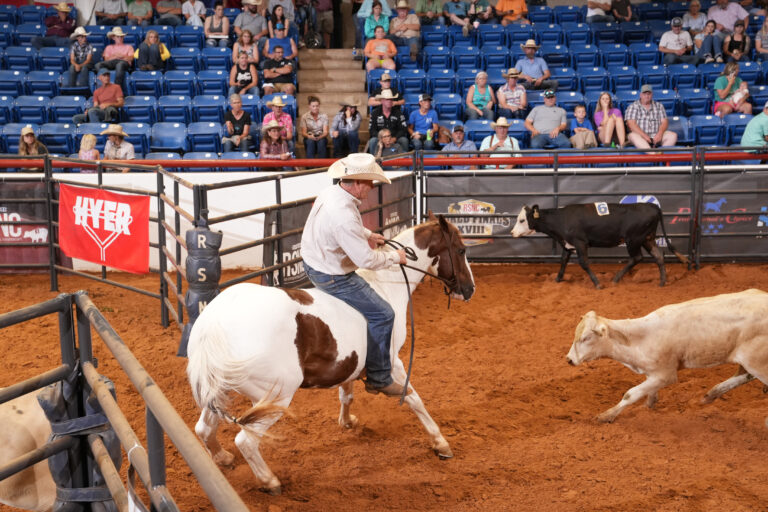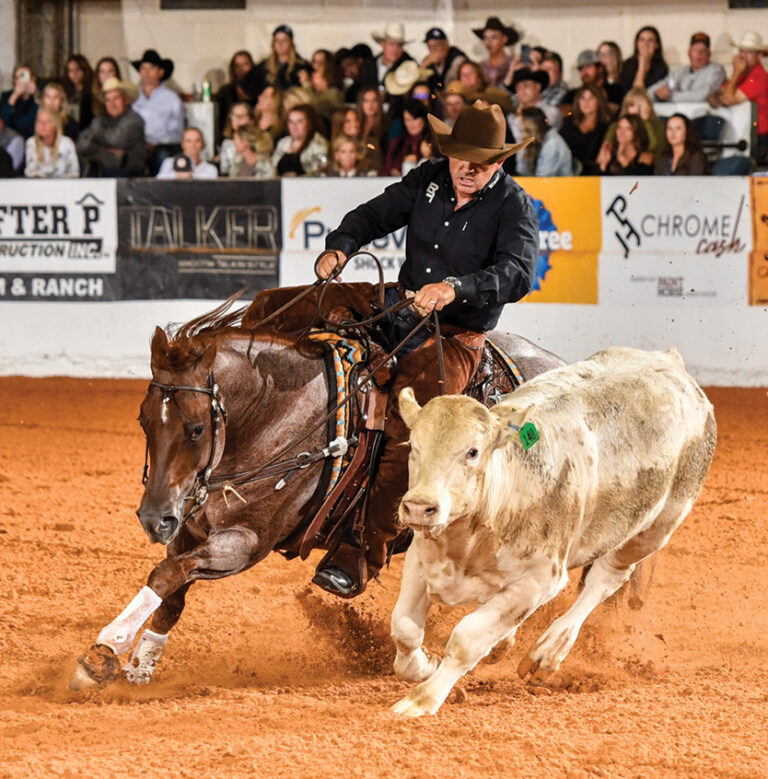Everyone said I was crazy. Buying a draft horse, sight unseen, off the Internet? Now the moment of truth had arrived, and I was sitting on Clyde for the first time. I squeezed with my legs. Nothing happened. I squeezed harder, and the big gelding sort of shrugged, shuffling his huge feet. My trainer popped a whip behind him, which produced a few random steps, but when I asked more firmly with mild spurs, Clyde crow-hopped his dissent.

This, from the horse that was supposed to become my partner in mounted police work.
Had I been wrong about him?
Bombproof, Really?
It was 2012 when I was offered a chance to try out for the Sheriff’s Mounted Enforcement Unit of Orange County, California. I was working with a young Quarter Horse gelding at the time, taking lessons to improve my skills and doing a little ranch sorting. After he and I became the entertainment at several stressful mounted-unit trainings, I realized my high-strung performance gelding wasn’t the horse for this job. My search for a better prospect began.
At first, it seemed everyone I spoke with was selling a “police horse.” But somehow none of them could pass even a minor sensory test without becoming wild-eyed and spooky.
I moved my search online, checking multiple Web sites for weeks with no luck. Then, late one night, I saw a small advertisement for a “bombproof horse” on a site called Horses Deserve a Second Chance. Nicole Hilliard, the site’s owner, told me that Clyde, a 16.3-hand Percheron gelding, had been a plow horse most of his life. Now about 12, the fleabitten gray had recently been rescued from a slaughter-bound holding pen, grossly underweight.
Watching his videos, I saw a horse with an extremely kind eye, a steady mover who kept his cool around various kinds of spooky input, including gunfire.
My friends were skeptical. “Do not buy a horse over the Internet, without trying him,” they told me. “You can’t trust a horse dealer even if she does rescue horses. This ‘cheap’ horse is going to ‘cost’ you plenty.”
The Big Guy Arrives
But I did trust Nicole, and I felt a strong urge to help this horse. I paid the fee to a professional horse-transfer company, and soon Clyde was on his way from Pennsylvania to California. The shipping charge was twice the cost of the horse. The shippers, amazed they were transporting such an animal, felt sorry for him. They upgraded him to a box stall so he could move about and lie down during the long haul.
So here was Clyde traveling across the country on an air-ride suspension semi truck with other horses valued in the hundreds of thousands of dollars. “You’re crazy,” my friends reminded me.
When Clyde arrived, he regarded me with calm, kind eyes. An indentation and scar above his nose showed where the plow-harness rigging had left its mark. A permanent bare spot on his spine, above his hips, revealed where the plow-harness chains had crossed over his back. His topline was sunken and you could place fingers in between his ribs. Except for his time with Nicole, Clyde had spent the prior six months in a small turnout with almost no food, surviving a Northeast winter chewing on tree bark and fence posts—and eating his own poop.
I’m a Marine vet and a lifetime law-enforcement guy, but seeing Clyde and thinking of all he’d been through seared me. “You may never make a mounted patrol horse,” I told him, “but I promise you’ll always have a home and be well cared for.”
Clyde ‘Steps Up’
Several weeks later—after veterinary care; proper feeding; and attention to his cracked, brittle hooves—Clyde was ready for our first test ride. He stood quietly as I mounted, but then came that balkiness and crow-hopping.
Confused, I called Nicole. “He’s been a plow puller his whole life,” she said with a laugh. “Use the draft commands.” The next day, I sat in the saddle and popped the reins as if I were driving a wagon, commanding, “Step up!”
To my amazement, Clyde stepped right off. Down the arena we went. At “come gee” he turned right; at “come haw” he went left. With this key to unlocking communication between us, and with my trainer’s help, I had Clyde responding to ordinary rein and leg cues in no time.
I also exposed him to various sensory experiences—“scary” things that moved and made noise—to see what might spook the big guy. Clyde was a rock.
Then it was time to take him to actual mounted-patrol training. When he stepped out of my trailer, there were a few chuckles about “the big plow horse.” The riot training scheduled for that day was advanced work for qualified mounts only, but I decided to let Clyde show what he could do. I kept him in the line with the other horses as a crowd of noisy “protestors” approached—flags waving, rocks rattling in cans, people whistling and screaming. Clyde stood his ground.
The training sergeant then set off three smoke grenades behind us. As billows enveloped us from behind, the horses on either side of Clyde and me sank back, and other riders began to have trouble controlling their mounts. Clyde, by contrast, just stood there.
Amazed, I brandished my baton and warned the “protestors” to stay back, bursting with pride for my ready-made patrol horse.
Today Clyde is a fully qualified and respected police mount. He’s worked regular patrol, special events, and even search-and-rescue missions in the hills. He’s muscled up and spunkier now, and will walk, trot, or lope with the lightest cue. He sidepasses, turns on both ends, and will go anywhere and do anything I ask of him.
He deserved a second chance, and I’m so glad I gave it to him. And what he gave to me, I can’t even measure.
Doug Williams moved to Norco, California (“Horsetown USA”) in 2009 and immediately got involved with horses. On rescued draft mounts, he and his wife, Debbie, ride several times a week. He hopes to help further efforts to rescue draft horses and find them good homes.






